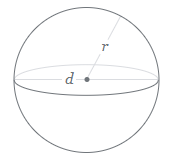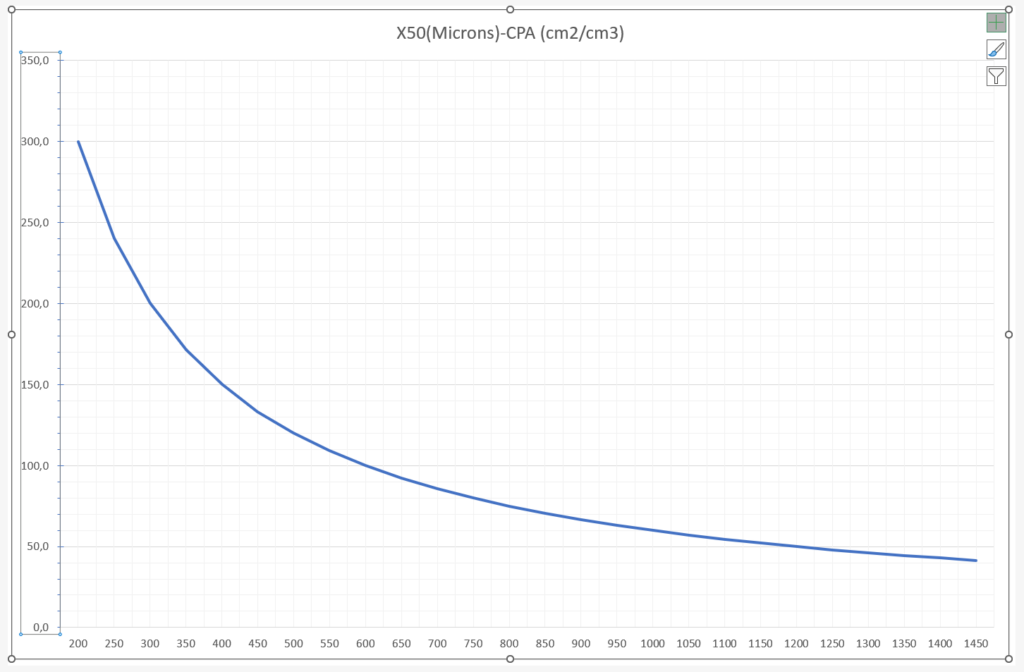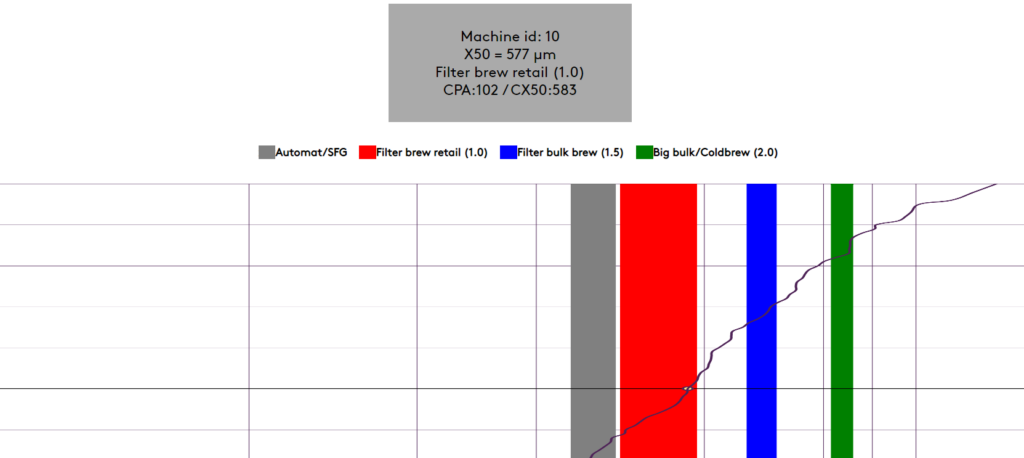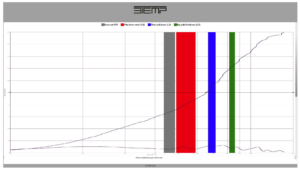The surface area of coffee grinds has finally gained increased interest from all over, but still, most people talk about microns when defining the grind size. At 3TEMP, we want to introduce the CPA value given by the Coffee Particle Analyzer.

In this article, we pretend that all coffee grinds measured are shaped like spheres. Analyzing every possible shape is more or less impossible. It would certainly not be possible without extreme equipment and high-speed computers, as coffee grinds are small, and there are thousands of particles even in a small sample.
The definition of the CPA unit (surface area per cubic centimetre)
Given that the surface area of a sphere is calculated by
![]()
and the volume of a sphere is,

Now let’s pretend that you have analyzed a coffee that your analyzer (of any sort or method you chose) gives that your medium grind is 600 microns => r=0,03 cm.
What does this mean?
The Volume of your medium-sized grain is
4*π*0.03*0.03*0.03/3 = 0.0001131 cm3.
The surface area of a single grain can be calculated by
4*π*0.03*0.03 = 0.01130973 cm2.
To have a total of 1 cm3 coffee of that sized coffee grinds, you will need to have 8841 grinds, this as
8841*0.001131=0,9999171 cm3.
If we take all those 8841 grains of coffee grains and sum up the surface area, we get
8841*0.01130973 = 99,989 cm2.
So by this, we can say that a perfect grinder that grinds 600um, all sphere-shaped and precisely the same size (600um), will give 100cm2 of surface area per 1 cm3 solid coffee, which is then what we call 100 CPA.
The same calculations on 300 um grains give 200 cm2 or 200 CPA, and on 1200um (really course coffee), 50 CPA.
The Graph

Looking at the graph, we notice one crucial reason CPA is a better way of measuring grind size instead of just mentioning the microns.
Analyzing 1000 micron-sized grains compared to 1100 micron-sized grains shows that the critical surface area is almost the same, 60 CPA vs 54.5 CPA, to be precise. But if we instead compare 300 microns and 400 microns, the surface area will differ a lot more, 200 CPA vs 150 CPA.
A size change of 100 microns will have a much bigger movement in the CPA (Surface area per cm3) when the grinds get smaller.
Microns are destroyed, and there will never be a standard micron size everyone will accept.
When talking about coffee grind size, there are many different descriptions of the actual size; a good article and one way can be found here “Coffee Grind Size Chart: How Grind Size Affects Coffee Flavor.”
Describing grind size by comparing it to different “known” sizes, like “Table salt”, does often work, but it doesn’t work well when seeking a consistent, standardized and well-defined unit.
Instead, microns are often used, but microns can sadly mean different things, even when speaking about coffee grinding.
There is today not one single microns scale, microns in between burrs are not seldom what many grinder companies use, and this tends to confuse users, letting them believe that the scale is telling the user what size the grinds will have. Also, dark vs light roasted coffee will produce a completely different distribution even on the same setting on the grinder. Other brands have chosen from 0-100 as their scale, and there is plenty more different solution out there.
When we know this, we can start looking at other measurements and ways of getting the correct grind size. Tools like the Malvern Mastersizer and Sympatec HELOS use laser diffraction, while devices like the Curve sift the coffee. All of those work, but the lasers are not portable and also expensive, while sifters tend to be more time-consuming and also need a lot more coffee.
 There are also different ways of defining the “medium-sized” grain or how the devices calculate the actual grind size, more or less hidden from the public. The mentioned devices have their way of doing this, while the portable and quick 3TEMP CPA uses a defined open scale everyone can understand and use.
There are also different ways of defining the “medium-sized” grain or how the devices calculate the actual grind size, more or less hidden from the public. The mentioned devices have their way of doing this, while the portable and quick 3TEMP CPA uses a defined open scale everyone can understand and use.
Coffee particle analyzer by 3TEMP
The real world has no perfect grinder.
When any grinder grinds coffee, no matter price or technique, the result will be a lot of too-small, fine grinds, other grinds will be too large, and the rest of every size in between.
The better the quality of the grinder, the higher percentage of the result will be somewhere around the grind size you want.
By analyzing every grind, the percentage and what surface area + volume they have, the Coffee Particle Analyzer will take into count all of the distribution when calculating the CPA.
This will lead to a number that gives the surface area of the distribution, also taking into account what is shown above, smaller grinds add more to the surface area then on the volume.
CPA is by this the distribution’s surface area transformed into the surface area per cm3. Not to medium-sized grain.
A sample result

102 CPA, when counting backwards, the CPA value gives that the distribution will taste like coffee, sized at 583 microns from a perfect grinder. This number is what the Coffee Particle Analyzer provides as CX50 (Calculated X50), even if all grinds are a mix of large and tiny grinds, far from the wanted target microns. The X50 value of 577 microns is the “medium-sized” grain, but the distribution surface area in this sample tends to be slightly smaller; there are slightly more course coffee (courser grains results in a smaller CPA value) than the X50 value, even if the X50 and CX50 values are almost the same in this sample.


